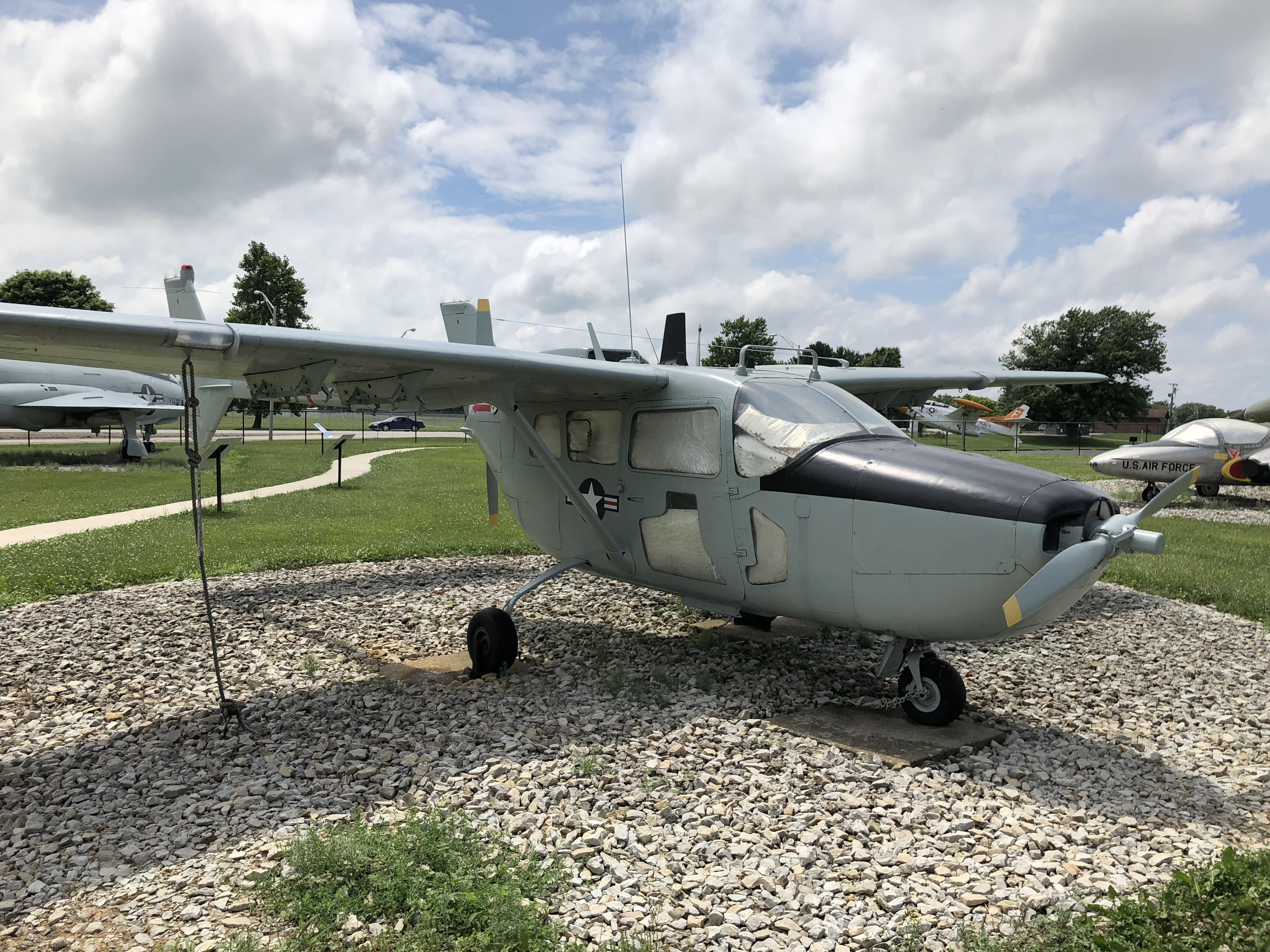CESSNA O-2A
SUPER SKYMASTER

In late 1966 the U.S. Air Force selected a military variant of the Cessna Model 337 Super Skymaster (also known as the “Oscar Deuce” or “The Duck”), designated the O-2, to supplement the O-1 Bird Dog forward air controller (FAC) aircraft then operating in Southeast Asia. Distinguished by twin tail booms and tandem-mounted engines, it featured a tractor-pusher propeller arrangement. Having twin engines enabled the O-2 to absorb more ground fire and still return safely, endearing it to its crews. The O-2 first flew in January 1967, and production deliveries began in March. Production ended in June 1970 after Cessna had built 532 O-2s for the USAF.
Two series were produced: the O-2A and the O-2B. The O-2A was equipped with wing pylons to carry rockets, flares, and other light ordnance. In the FAC role, the O-2A was used for identifying and marking enemy targets with smoke rockets, coordinating air strikes and reporting target damage. The O-2B was a psychological warfare aircraft equipped with loudspeakers and leaflet dispensers. It carried no ordnance.This plane was used in Vietnam and has a combat record. The movie, “Bat-21,” is a good portrayal of how this plane was used in combat.
| SPECIFICATIONS | |
| Span: | 38 ft. |
| Length: | 29 ft. 2 in. |
| Height: | 9 ft. 5 in. |
| Weight: | 4,900 lbs. loaded |
| Armament: | Four wing pylons can carry rockets, flares, 7.62 mini-gun pods, or other light ordnance |
| Engines: | Two Continental 10-360s of 210 hp. each |
| Crew: | Two |
| Cost: | $ 92,000 |
| Tail Number: | 68-6871 |
| Nicknames: | Snoopy, Oscar Deuce, The Duck |
| PERFORMANCE | |
| Maximum Speed: | 199 mph |
| Cruising Speed: | 144 mph |
| Range: | 1,060 miles |
| Service Ceiling: | 19,300 feet |